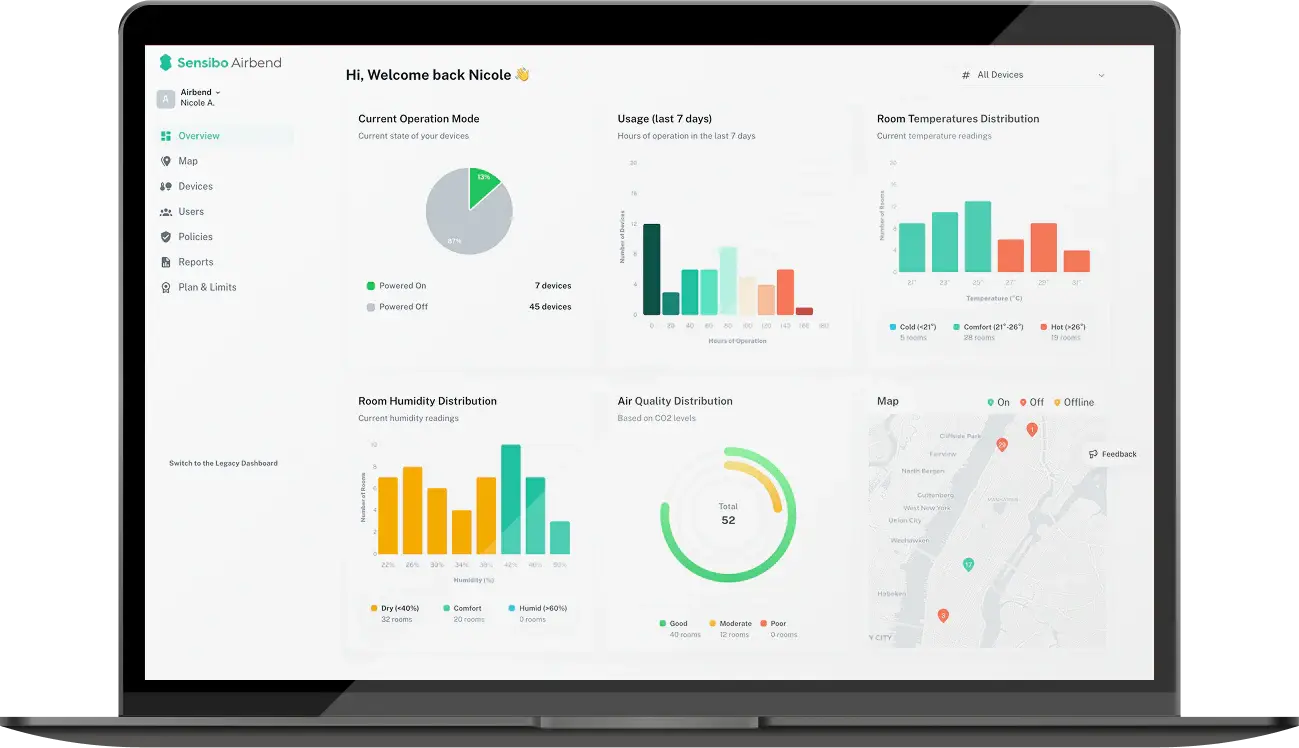How Air Quality Affects Pregnancy: What Every Mother Should Know
Every breath matters - especially when you're breathing for two. Hidden within each lungful of air, microscopic particles can slip from a mother's bloodstream straight to her developing baby. This direct connection transforms air quality and pregnancy from a general health topic into something deeply personal for expectant mothers.
Medical teams at the University of Utah watched this story unfold firsthand. Following thousands of pregnancies showed them something vital: clean air shapes healthy beginnings. Yet knowing about these air quality impacts helps mothers take charge of their environment.
Pregnancy changes everything - including how much oxygen you need. The Environmental Protection Agency notes that pregnant women use up to 20% more oxygen than usual. Breathing faster and deeper means taking in more of whatever floats in the air around you. Doctors watching pregnancy and air quality patterns noticed sensitive reactions starting at just 35 on the AQI scale - far below what affects others. When mothers ask, "At what level does the Air Quality Index become a concern for pregnant individuals?" this number matters.
Look inside your home, and you might spot a surprise. WHO researchers discovered indoor spaces often trap more pollutants than the air outside - sometimes five times more. This finding opens up important questions about protecting both mother and baby during these crucial months.
Air Pollution And Its Effects on Pregnancy
Tiny troublemakers float through the air we breathe. The smallest particles, known as PM2.5, sneak past our body's natural defenses. For mothers dealing with air pollution when pregnant, these microscopic invaders pose unique challenges. A groundbreaking study in The Lancet follows the journey of these particles from a mother's lungs straight to where new life grows.
Picture the air in your home right now. Beyond visible dust, it might carry:
- Volatile organic compounds from fresh paint or new furniture
- Cooking fumes that linger longer than you'd think
- Invisible gases from everyday cleaning products
- Outdoor pollution that drifts through open windows
Your body works overtime during pregnancy, filtering air through expanded lung capacity. Recent findings from the Study on PubMed paint a clear picture: exposure to poor air quality increases blood pressure in expectant mothers. This extra strain shows up most during the final trimester - exactly when your body needs to perform at its peak.
Consider this eye-opening discovery: many pregnant women reach for an air purifier for pregnancy after learning about indoor air challenges. Environmental scientists now understand that indoor air often carries a heavier pollution load than outdoor air. This revelation sparked a wave of research into how filtered air influences pregnancy outcomes.

How Air Pollution Can Affect a Child's Development
Each breath a baby takes shapes their future. A fascinating revelation from Columbia University's Center for Children's Environmental Health tracks how early exposure leaves lasting fingerprints. Their research maps clear connections between air quality during pregnancy and a child's respiratory strength years later.
What happens before birth echoes through childhood. Studies published in Nature show babies growing in cleaner air environments typically reach healthier birth weights. Some mothers now consider an air purifier for babies as essential as a crib. The science backs this instinct - filtered air during pregnancy correlates with better developmental outcomes.
Inside the nursery, unseen particles can influence how tiny lungs develop. European pediatric researchers discovered that exposure to elevated pollution levels during pregnancy might lead to:
- Changes in how breathing pathways form
- Shifts in immune system development
- Variations in birth weight ranges
- Different patterns in early growth
Wise mothers pay attention to both outdoor and indoor air. The latest findings from pediatric environmental health experts show that babies born to mothers who used an air purifier for pregnant women scored better on early breathing tests. This protective effect appears strongest during the second and third trimesters - crucial windows for lung development.

Factors That Increase The Impact of Pollution
Location Matters
Living near busy roads doubles your exposure to harmful particles. A block's difference in distance from major traffic arteries can mean breathing significantly different air. Urban mothers encounter a complex mix of building emissions, vehicle exhaust, and industrial output. Each neighborhood writes its own air quality story.
Weather and Seasonal Changes
Heat waves amplify pollution's effects. Scorching summer days trap pollutants close to the ground - exactly where you're breathing. Add humidity to this mix, and air quality often plummets. Seasonal patterns show pollution peaks during both summer heat and winter temperature inversions. Nature's cycles directly impact what you breathe.
Daily Routines and Timing
Your daily schedule shapes exposure levels. Rush hour commutes pack extra pollution punch. Cars idle longest between 7-9 AM and 4-6 PM, creating pollution hotspots. Morning exercisers might want to adjust their schedules - pollution levels often spike during early hours when temperature shifts trap exhaust near ground level.
Individual Health Factors
Personal health histories write unique chapters in each mother's story. Asthma or allergies multiply air quality impacts. Previous respiratory issues can make you more sensitive to everyday pollutants. Even mild breathing difficulties before pregnancy often intensify as your body demands more oxygen for two.
Living Space Considerations
Apartment height affects your exposure - upper floors typically enjoy cleaner air than street level. Home ventilation systems, building age, and nearby green spaces all influence indoor air quality. Recent renovations or new furniture can temporarily increase indoor pollutant levels.
How to Protect Yourself and Your Child From Polluted Air
Inside Your Space
Start with your breathing sanctuary - your home. An air purifier for pregnancy belongs in spaces where you spend most time, especially the bedroom. Place it away from walls and corners, letting it catch particles efficiently. Choose models with true HEPA filters that capture the tiniest troublemakers in your air.
Smart Timing
Watch local air quality reports like weather forecasts. Schedule outdoor activities when pollution levels dip - typically midday or early evening. Your morning walk might serve you better after rush hour settles. Keep windows closed during peak traffic times, opening them when local air quality improves.
Home Habits That Help
Switch to natural cleaning products that don't release harsh fumes. Keep indoor humidity between 30-50% - mold spores hate these levels. Dust with damp cloths instead of dry ones, trapping particles instead of launching them airborne. Consider an air purifier for babies in the nursery-to-be, creating a clean air zone well before arrival day.
Green Solutions
Certain houseplants naturally filter air - snake plants and spider plants work while you sleep. Create clean air zones using strategic placement of plants and air purifiers for pregnant women. Remember to check plant safety for pregnancy - some varieties better suit other rooms.
Ventilation Wisdom
Balance fresh air needs with pollution protection. Brief ventilation sessions work better than leaving windows open all day. Use bathroom and kitchen fans to pull out cooking fumes or shower steam. When outdoor air quality peaks, rely on your purifier rather than open windows.
 Tips For Expectant Mothers
Tips For Expectant Mothers
Know Your Numbers
Download a reliable air quality app. Track daily patterns in your area - knowledge guides better decisions. When pollution spikes appear in the forecast, adjust your schedule proactively. Think of air quality monitoring as your invisible health guardian.
Create Clean Zones
Your bedroom deserves special attention - you spend nearly a third of your life there. Keep your air purifier for baby running consistently rather than just during poor air days. Layer your protection: air purification, gentle ventilation, and natural cleaning products work together, creating your safe space.
Listen to Your Body
Pay attention to how different environments affect your breathing. Notice when you feel most comfortable and energetic. Some mothers discover their bodies signal air quality changes before monitors do. Trust these insights - they often guide smart choices about where and when to spend time outdoors.
Build Better Habits
Small changes add up to significant protection. Keep shoes at the door - they track surprising amounts of outdoor pollutants. Change clothes after commuting through heavy traffic areas. Consider using the metro or less-polluted travel routes when possible.
Long-term Vision
The habits you build now protect both you and your little one. Good air quality practices often become family traditions. Many mothers find their pregnancy-inspired clean air strategies benefit the whole household long after the baby arrives.
Remember: creating the best possible air environment isn't about perfection. It's about making informed choices that work for your daily life. Every breath of cleaner air supports your baby's healthy development.
Building a healthy environment for your baby starts with each breath you take. Quality air forms an invisible shield around your growing family. While you can't control every molecule in the atmosphere, you hold the power to create cleaner spaces where it matters most.
From choosing the right air purifier for pregnancy to making smart timing decisions about outdoor activities, each choice adds up. Mothers worldwide have transformed their air quality awareness into lasting family habits.
Your journey toward cleaner air not only protects your baby's earliest moments but also sets the foundation for years of healthy breathing ahead. Remember - every step toward better air quality, no matter how small, supports the incredible work your body does in creating new life.




































.jpg?height=200&name=photo_2024-04-05_20-42-58%20(1).jpg)

-1.jpg?height=200&name=photo_2023-11-30_19-30-22%20(1)-1.jpg)